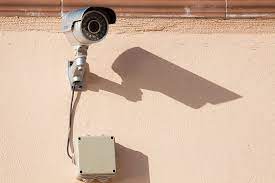In an age where security is paramount, the role of surveillance CCTV systems has become indispensable. These watchful eyes offer more than just deterrence; they provide a sense of control and peace of mind in an unpredictable world. In this blog, we’ll delve into the intricate web of CCTV surveillance, exploring its evolution, applications, technology, and the crucial role it plays in modern security.
The Evolution of CCTV Surveillance
From the early closed-circuit television systems to the cutting-edge smart cameras of today, the evolution of CCTV surveillance has been marked by technological leaps. High-definition imaging, advanced analytics, and remote monitoring capabilities have transformed these systems into sophisticated tools for protecting homes and businesses.
Applications Beyond Security
While the primary purpose of CCTV cameras is to deter and detect criminal activities, their applications go beyond mere surveillance. Businesses use them to monitor operations, enhance productivity, and prevent theft. In homes, they provide a watchful eye over loved ones, pets, and property. The versatility of CCTV systems extends to urban planning, traffic management, and public safety.
Choosing the Right CCTV System
Selecting the right CCTV system involves considering various factors, including the type of cameras, resolution, field of view, and connectivity options. Whether it’s a wired system for comprehensive coverage or a wireless setup for flexibility, understanding your specific security needs is crucial to making an informed decision.
Technology Driving Surveillance Innovation
The technological landscape of CCTV surveillance is continually advancing. AI-powered analytics, facial recognition, and smart integration with other security systems are reshaping how we perceive and implement surveillance. Staying abreast of these technological advancements empowers users to maximize the potential of their CCTV systems.
Privacy and Ethical Considerations
As the capabilities of CCTV systems expand, so does the need for responsible and ethical use. Addressing privacy concerns, complying with regulations, and ensuring transparency are essential aspects of deploying surveillance cameras. Striking the right balance between security and privacy is paramount in fostering a safe and respectful environment.
